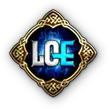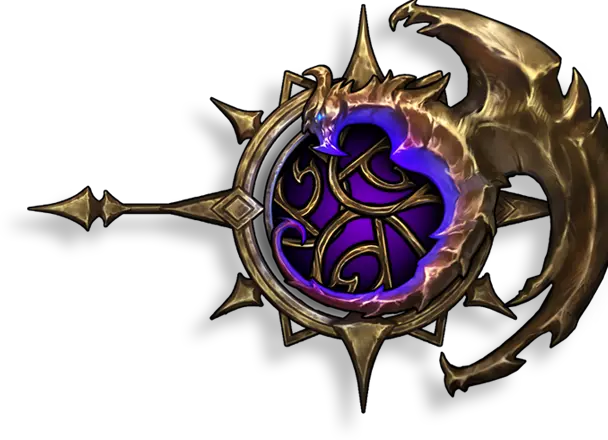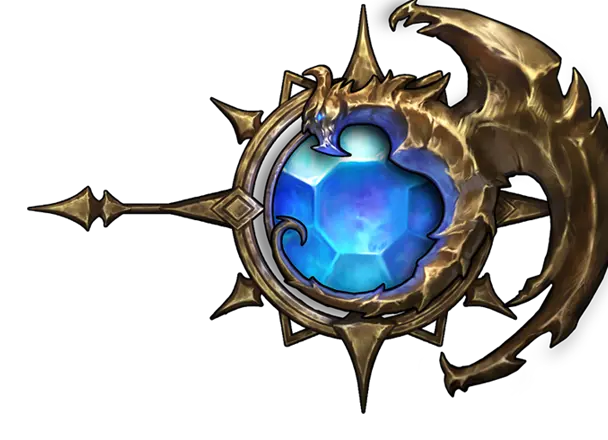The Power of the Deck: Building a Winning Strategy in CCG Games
Popular Digital Collectible Card Games
The landscape of digital collectible card games (CCG) is vast, with numerous titles capturing the attention of strategic, creative, and competitive players. Let’s dive into the top viewed games and notable streamers in the world of CCGs.
Top Viewed Games
Among the plethora of CCGs available, a few stand out in terms of viewer engagement and popularity. Hearthstone leads the pack, amassing a significant number of viewer hours. Over the last seven days, Hearthstone garnered 2,500,684 viewer hours across 32,372 streams by 13,067 streamers. This accounts for 68.3% of the total viewer hours among the top 10 collectible card games on Twitch.
| Game | Viewer Hours | Streams | Streamers |
|---|---|---|---|
| Hearthstone | 2,500,684 | 32,372 | 13,067 |
| Legends of Runeterra | 589,263 | 8,985 | 4,321 |
| Gwent | 412,589 | 6,234 | 3,789 |
| Magic: The Gathering | 378,456 | 5,987 | 3,456 |
| Eternal | 198,654 | 3,123 | 2,145 |
These figures indicate the dominance of Hearthstone in the digital CCG market. Released in 2014, Hearthstone solidified digital card games as a genre and paved the way for other popular titles like Legends of Runeterra, Eternal, Gwent, and Slay the Spire (MassivelyOP).
Notable Streamers
Streamers play a crucial role in the popularity and engagement of digital CCGs. Among them, RduLIVE has emerged as a significant figure, especially in the Hearthstone community. Over the last seven days, RduLIVE generated 195,179 viewer hours, representing 39.1% of the total viewer hours among the top 25 collectible card game streamers.
| Streamer | Viewer Hours | Game |
|---|---|---|
| RduLIVE | 195,179 | Hearthstone |
| Swim | 120,589 | Legends of Runeterra |
| Merchant | 89,456 | Gwent |
| Crokeyz | 78,654 | Magic: The Gathering |
| Lights_out | 56,123 | Eternal |
The influence of these streamers extends beyond mere gameplay; they often provide insights, strategies, and community engagement that enrich the gaming experience for their viewers. Their contributions are invaluable in fostering a thriving community around digital CCGs.
By examining the top viewed games and notable streamers, we gain a clearer understanding of the current landscape of digital collectible card games.
Overview of Trading Card Games
Definition of TCG
A trading card game (TCG) is a type of game where players build decks from a pool of collectible cards. These cards are primarily sold in randomized booster packs, encouraging trading among players and creating a secondary market. In TCGs, each player constructs a deck with specific strategies and mechanics to outplay their opponents.
Evolution of TCGs
The evolution of trading card games has been marked by several key developments:
- The Spoils: An older TCG known for its unique mechanics and humorous cards. Players could use any card in their hand as a resource, creating flexible gameplay (Draftsim).
- Yu-Gi-Oh!: A constantly evolving game with changing core mechanics and multiple formats like Advanced, Traditional, Speed Duel, and Common Charity. It offers starter decks at low prices and features fast-paced gameplay.
- Disney Lorcana: A newer TCG with straightforward rules and easy deck construction. While it has limited depth, it is accessible with starter decks priced around $20 (Draftsim).
- Flesh and Blood: Known for its complex gameplay and multiple formats such as Classical Constructed and Blitz. It provides an enjoyable experience even in loss, with reasonable prices for trying out decks.
| TCG | Unique Features | Formats | Starter Deck Price |
|---|---|---|---|
| The Spoils | Play any card as a resource, humorous cards | N/A | N/A |
| Yu-Gi-Oh! | Changing mechanics, multiple formats | Advanced, Traditional, Speed Duel, Common Charity | Inexpensive |
| Disney Lorcana | Straightforward rules, easy deck construction | N/A | ~$20 |
| Flesh and Blood | Complex gameplay, enjoyable even when losing | Classical Constructed, Blitz, Draft, Sealed, Ultimate Pit Fight, Blitz Preconstructed | Reasonable |
The landscape of TCGs continues to evolve, with new games introducing innovative mechanics and engaging formats to captivate players.
Key Players in the CCG Market
Understanding the key players in the Collectible Card Game (CCG) market is crucial for anyone interested in the industry. Let’s explore the market size, its growth, and the leading companies shaping this dynamic sector.
Market Size and Growth
The global Collectible Card Game market has seen significant expansion in recent years. The market size was valued at USD 12,722 million in 2021 and is expected to grow at a Compound Annual Growth Rate (CAGR) of 16.77% during the forecast period, reaching USD 32,251 million by 2027. Another projection estimates the market size to reach USD 36,660 million by 2028, starting from USD 12,900 million in 2021, with a CAGR of 15.9% during 2022-2028.
| Year | Market Size (USD Million) | CAGR |
|---|---|---|
| 2021 | 12,722 | 16.77% (2021-2027) |
| 2027 | 32,251 | |
| 2028 | 36,660 | 15.9% (2022-2028) |
Leading Companies
Several companies dominate the global CCG market, each contributing significantly to its growth and innovation. Here are some of the leading companies:
- Hasbro Inc.: Known for its extensive range of toys and games, Hasbro also owns Wizards of the Coast, the publisher of Magic: The Gathering, one of the most successful CCGs.
- Blizzard Entertainment: Creator of Hearthstone, a popular digital CCG that has a massive player base.
- CyberAgent (Cygames): Developer of Shadowverse, a digital CCG with an anime-inspired aesthetic.
- Take-Two Interactive Software, Inc.: Known for its diverse portfolio of games, including the CCG genre.
- Konami: Publisher of the Yu-Gi-Oh! series, which has both physical and digital formats.
- Supercell: Known for Clash Royale, a real-time strategy game that incorporates CCG elements.
- KYY Games: Developer of several niche CCGs.
- Bushiroad: Publisher of Cardfight!! Vanguard and other card games.
- Nintendo: Known for various gaming innovations, including CCGs.
These companies are key suppliers in the global CCG market and continue to influence its trajectory (LinkedIn).
By examining the market size and growth, along with the leading companies, we can better understand the dynamics of the CCG market and the factors driving its expansion.
Monetization in Digital vs. Physical Card Games
Understanding the monetization strategies in Collectible Card Games (CCG) is crucial for grasping how these games generate revenue and sustain player engagement. In this section, we’ll explore the differences between digital card game monetization and the culture surrounding physical card games.
Digital Card Game Monetization
Digital card games have introduced various monetization methods over the years. For example, games like Hearthstone and Legends of Runeterra often require players to either spend real money or earn in-game currency to acquire new cards. This can be challenging as the digital cards have no resale value, unlike their physical counterparts.
Hearthstone, a popular digital card game, has explored several revenue streams. Players can spend upwards of $500 for a complete set, making it an expensive hobby. Additionally, Blizzard has experimented with new monetization avenues such as subscriptions, especially after losing its Chinese player base.
| Game | Estimated Cost for Full Set | Monetization Methods |
|---|---|---|
| Hearthstone | $500+ | In-game purchases, subscriptions |
| Legends of Runeterra | Varies | In-game purchases |
The introduction of various game modes, such as mercenaries and battlegrounds in Hearthstone, has also been a part of its evolving monetization strategy. However, attempts to implement battle passes and other monetization methods have sometimes faced backlash from the player community.
Physical Card Game Culture
In contrast, physical trading card games (TCGs) such as Magic: The Gathering, Yu-Gi-Oh, and the Pokémon Trading Card Game have a rich culture of trading, buying, and selling cards. The value of these physical cards is influenced by supply and demand, with rare cards often commanding high prices due to their power and historical significance.
Some individuals even make a living from trading and selling physical cards, which can be seen as both collectibles and investments. The tangible nature of these cards adds an extra layer of value and engagement for players and collectors alike.
| Game | Notable Features | Market Influence |
|---|---|---|
| Magic: The Gathering | Rare cards, tournaments | High resale value |
| Yu-Gi-Oh | Trading, competitive play | Influenced by new releases |
| Pokémon TCG | Collectibles, nostalgia | High demand for rare cards |
The physical card game culture fosters a community where players can interact, trade, and compete in person. This social aspect is less pronounced in digital card games, where the focus is more on virtual gameplay and online interactions.
Both digital and physical card games have their unique monetization strategies and cultural elements, catering to different player preferences and market dynamics. Understanding these differences helps us appreciate the diverse landscape of CCG games and the varying ways they engage their audiences.
Strategies for Launching a New TCG
Launching a new Trading Card Game (TCG) requires careful planning and strategic execution. In this section, we will explore the key elements of success and the importance of community building for a thriving new TCG.
Elements of Success
To ensure the success of a new TCG, we must focus on two primary goals: providing an engaging gaming experience and encouraging collecting. A well-balanced game mechanic is essential to keep players interested and invested in the game. Additionally, the game should have a compelling storyline and unique card designs to attract collectors and players alike.
| Element | Description |
|---|---|
| Engaging Game Mechanics | Balanced gameplay, strategic depth, and replayability. |
| Compelling Storyline | Rich lore and immersive background stories. |
| Unique Card Designs | Eye-catching artwork and innovative card layouts. |
| Collectibility | Rarity levels, special editions, and limited releases. |
| Organized Play Programs | Tournaments, leagues, and events to foster competition and community. |
An organized play program supported by the publisher is crucial for long-term success (Spellenhuis). This includes hosting tournaments, leagues, and special events to keep players engaged and motivated.
Community Building
Community building, also known as hobby building, is a key element in the success of a TCG. Engaging with the community through organized play programs and events is essential for creating a loyal and growing player base.
No brick-and-mortar TCG has ever been successful without the support of Friendly Local Game Stores (FLGS). These stores provide a valuable space for players to meet, play, and connect. The community-building efforts of FLGS are invaluable to a TCG’s long-term success (Spellenhuis).
| Community Building Strategy | Description |
|---|---|
| FLGS Support | Partnering with local game stores to host events and promote the game. |
| Online Presence | Active social media engagement and online communities. |
| Player Rewards | Incentives for participation in organized play programs. |
| Feedback Loop | Listening to player feedback and making necessary adjustments to the game. |
| Content Creation | Encouraging content creators to produce videos, articles, and streams about the game. |
By focusing on these elements and strategies, we can create a successful and sustainable TCG that captivates players and fosters a strong community.
Dominance in the TCG Market
Understanding the landscape of the trading card game (TCG) market involves recognizing the giants who have long held sway and the emerging competitors striving to make their mark. As we delve into the current state of the TCG market, it’s clear that certain companies have established themselves as dominant forces, while others are rapidly gaining traction.
Giants in the Industry
The TCG market is dominated by a few well-established giants. These companies have a significant influence on the market due to their extensive histories, vast player bases, and continuous innovation. The most notable among them are:
- Magic: The Gathering: The pioneer of modern TCGs, Magic: The Gathering (MTG), launched in 1993 and has maintained a strong presence ever since. Its complex gameplay and expansive lore have attracted millions of players worldwide.
- Pokemon TCG: Another major player, the Pokemon TCG, appeals to a broad audience with its familiar characters and accessible gameplay. It has been a staple in both digital and physical markets.
- Yu-Gi-Oh! TCG: Known for its unique mechanics and popular anime tie-ins, Yu-Gi-Oh! TCG has carved out a significant niche in the TCG community.
| Giant TCGs | Year Launched | Key Features |
|---|---|---|
| Magic: The Gathering | 1993 | Complex gameplay, expansive lore |
| Pokemon TCG | 1996 | Familiar characters, accessible gameplay |
| Yu-Gi-Oh! TCG | 1999 | Unique mechanics, anime tie-ins |
Emerging Competitors
While the giants hold significant market share, new and innovative TCGs are emerging, aiming to capture the interest of strategic, creative, and competitive players. These emerging competitors bring fresh mechanics and thematic elements to the table:
- Flesh and Blood: This game has garnered attention for its focus on player-versus-player combat and deep strategic elements. It’s rapidly building a dedicated player base.
- Digimon: With its rich lore and digital monster theme, Digimon has relaunched its card game with modern mechanics that appeal to both new and nostalgic players.
- One Piece the Cardgame: Leveraging the popularity of the One Piece anime, this game introduces unique gameplay mechanics tied to the series’ world.
- Battle Spirits: Known for its dynamic gameplay and colorful artwork, Battle Spirits continues to grow in popularity, particularly in Japan.
| Emerging TCGs | Unique Selling Points |
|---|---|
| Flesh and Blood | Player-versus-player combat, strategic depth |
| Digimon | Digital monster theme, modern mechanics |
| One Piece the Cardgame | Anime tie-in, unique gameplay mechanics |
| Battle Spirits | Dynamic gameplay, colorful artwork |
As we observe the TCG market, it’s evident that while the giants continue to dominate, emerging competitors are making significant strides. The success of any TCG—whether an established giant or a new contender—hinges on its ability to innovate, build a community, and provide engaging gameplay experiences. For more detailed insights, refer to Spellenhuis.
Legends of Elysium (LOE) offers a FREE-to-play strategic revolution that seamlessly blends collectible cards with the complexity of board games. Take control of a vibrant fantasy realm with distinctive races, customizable heroes, and boundless strategic options.
From DA Games, LOE brings you:
- Stunning visuals that enliven Elysium ✨
- Competitive multiplayer leagues to showcase your skills ⚔️
- Exciting battlefield challenges and eSports tournaments
- Play-and-earn mechanics to turn your playtime into profit
Join the legends now!
[CTA_BUTTON_PLAY]







